How do the transistors work?
Introduction
A transistor is a semiconductor device used in the many electronic circuits for amplifying and for the switching of electronic signals in different electronics circuit and electrical power. It is composed of semiconductor material (Such as silicon, germanium, etc) usually with the three terminals for connection to an external circuit. A voltage or current Provided by the source to one pair of the transistor's terminals controls the current through another.
Transistors made our electronics world go round. They’re basically used as a control source in every modern electronic circuit. Sometimes you see them, but more-often-than-not they’re hidden within the die of an integrated circuit. In this introduction, we’ll introduce you to the basics of the most common transistor around. the bipolar junction transistor (BJT).
Now here is the basic symbol of Transistor.
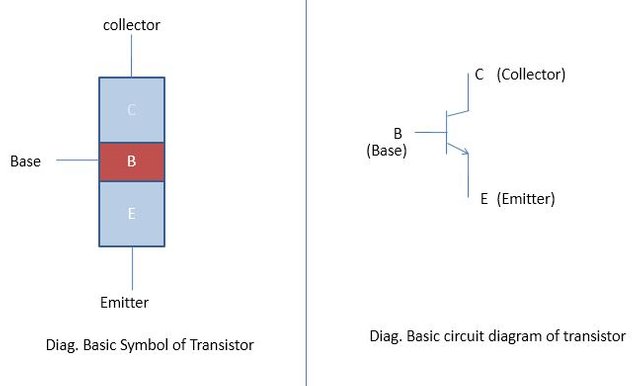
Construction and pins of Transistor
Transistors are basically three-terminal devices. such as collector (C), base (B) and emitter (E). The circuit symbols for this three terminal are shown below.
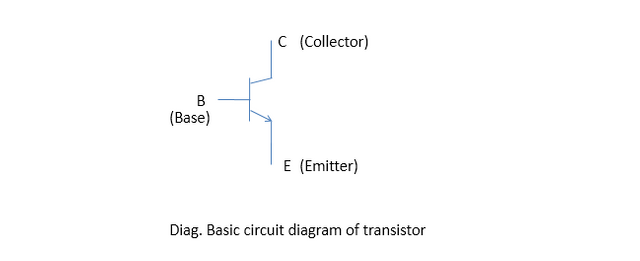
Types of Transistor
There are two types of transistor one is called NPN transistor and another one is called PNP transistor.
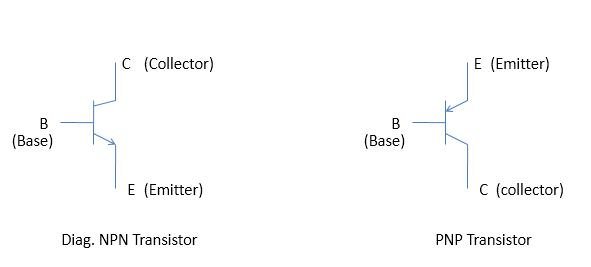
Here the only difference between this two transistor( NPN and PNP) is the direction of the arrow on the emitter. In the NPN transistor the arrow will be the outside of the circuit and in PNP transistor the arrow will be inside you can see in the circuit picture of both transistor circuit.
Today there are more many types of transistor are available including Bipolar, Darlington, IGBT, and MOSFET Transistor.
Bipolar Transistor
The Bipolar Junction Transistor also Known as BJT transistor is a three-terminal electronic device (such as an emitter, collector, and base). The Bipolar transistors are so named their operation involves both electrons and holes. A small current at the base terminal can switch larger current between the collector and emitter terminal.
Darlington Transistor
The Darlington Transistor basically two bipolar transistors, which is connected in a way that current amplified by the first transistor and further amplified by the second one transistor. This offer higher conman-emitter current gain if both types of the transistor are separated and can even take very low apace because both the transistor can
share a collector.
IGBT Transistor
An Insulated Gate Bipolar Transistor(IGBT) is a three-terminal power semiconductor device which is used in the electronic circuit as an electronic switch. This IGBT Transistor used in many modern appliances such as electric cars, Trains, air-conditioners etc. Because IGBT transistor is capable of switching electric power.
MOSFET Transistor
A MOSFET Known as Metal-Oxide-Semiconductor Field-Effect Transistor which is used in the integrated circuit to control the conductivity of a channel in the circuit. This types of transistor are mostly dependent on the charges(negative and positive). The Mosfet transistor has many purposes, such as used in storing data and used as a switch for a variety of electronic devices and also including limiting a devices power level in many electronic devices.
How do the Transistors work
Now we will see the working of a transistor. We know a transistor have the three terminals (base, collector and the emitter). In this three terminal, the current flowing from the base to the emitter "opens" the flow of the current from the collector to the emitter. We are taking an NPN transistor for understanding the working of the transistor here we need to apply a voltage of about 0.7V between the base and the emitter of the transistor to get the current flowing from base to emitter.
Now if you apply the voltage of 0.7V from base terminal to emitter it will turn the transistor ON and allow current to flow from the collector terminal to emitter.
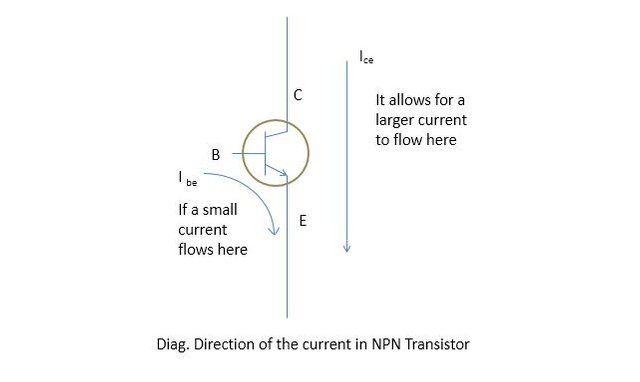
Let's take an example of a transistor for understanding the working.
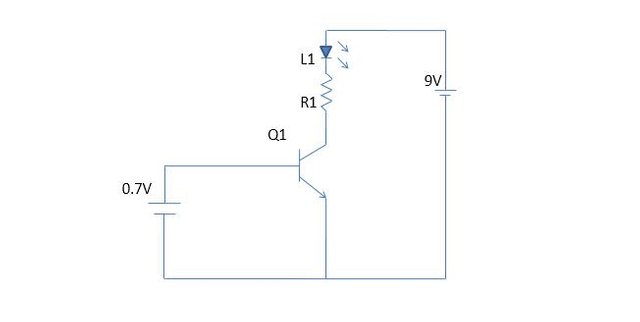
In this transistor, a 9V battery connects to a LED and a resistor but here you can see it connects to the transistor. It means that the current will not flow in that part of the circuit until the transistor turns ON.
For turn this transistor ON we need to apply 0.7V from the base-emitter of the transistor. Now you have a small 0.7V battery. (if we talk about in a practical circuit you would use a resistor to get the correct voltage from whatever source you have.
Now you apply the 0.7 battery from the base-emitter, the transistor will be turned ON. Now, this permit the current to flow from collector to the emitter and turning the LED will be ON!
Some more on transistor
Instead of having just two states (ON or OFF) this can also be anywhere in between totally ON and totally OFF.
A small control current can control how large a portion of a larger main current which is going to flow through it. Thereby, the transistor can amply the signal in the electronic circuit.
The transistor is used in almost all electronics and it is the most important component in the today's electronics.
Application of the transistor
The transistor has a small size and low weight that allowing the development of electronic devices.
The transistor has largest automated manufacturing processes, that resulting in lowest per unit cost.
Minimum possible operating voltage that making transistor suitable for a small and battery powered application.
The transistor is the minimum power dissipation, greater energy efficiency.
Extremely long life. some devices have been in service for more than 50 years.

Refrences & Sources: Images Self created.
This post has potential but the lack of references is kind of disappointing.